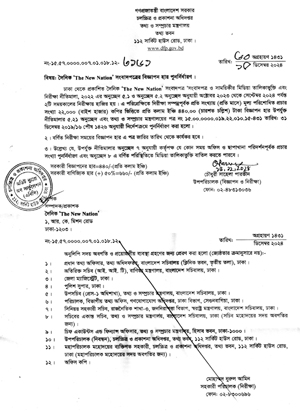Ashfaque Choudhury :
Bangladesh found itself thrust into the global spotlight as a dramatic political upheaval unfolded in the heart of Dhaka on a scorching summer’s day.
The capital became the epicentre of a political earthquake that shook the nation to its core. On August 5, 2024, the people of Bangladesh, driven by decades of discontent, seized control of Ganabhaban, the official residence of Prime Minister Sheikh Hasina.
The sun blazed mercilessly over the city as thousands of protestors-men and women from all walks of life-began to gather in the streets surrounding Ganabhaban. What started as planned demonstrations against quota reform rapidly escalated into a full-blown revolt. The frustrations of students, long ignored and dismissed, reached a boiling point.
By midday, the protests had morphed into a roaring tide of discontent. The demonstrators, their voices raised in unison, marched towards Gana Bhaban with a singular purpose. The Prime Minister’s residence, a symbol of the ruling elite’s power, became the focal point of their anger. Thousands of placards
and banners bearing slogans against Sheikh Hasina and her government waved defiantly in the scorching heat. The chants for justice and change reverberated through the city streets.
The situation had reached a critical point. Sheikh Hasina had already resigned and fled the country earlier in the day, following a brutal crackdown that resulted in hundreds of deaths. The protests, initially ignited by demands for job quota reform, had evolved into a broader movement calling for her downfall.
Jubilant, cheering crowds stormed into the opulent grounds of the Ganabhabhan unopposed, carrying out looted furniture and televisions. One man balanced a red velvet, gilt-edged chair on his head, while another held an armful of vases. Elsewhere in Dhaka, protesters climbed atop a statue of Hasina’s father, state founder Sheikh Mujibur Rahman, and began chiselling away at the head with an axe.
Sheikh Hasina’s flight into exile ended a 15-year second stint in power. She had led Bangladesh for 20 of the last 30 years as the head of the political movement inherited from her father, who was assassinated with most of his family in a 1975 coup.
The sea of protesters surged forward, believing this was their moment to reclaim their nation from what they perceived as corruption and misrule. The situation quickly escalated from a protest to a full-blown siege.
In scenes reminiscent of the Sri Lankan presidential palace takeover in 2022, the gates of Ganabhaban were stormed. The massive iron gates groaned under the weight of the crowd, finally giving way to their pent-up energy. Inside, the residence was a maze of opulence and power-luxurious rooms, ornate decorations, and symbols of authority that had long been disconnected from the daily struggles of ordinary Bangladeshis.
Once inside, the protesters scattered throughout the residence. Some took to the grand halls, while others climbed to the balconies to address the assembled crowd. The atmosphere was charged with a mixture of jubilation and defiance. The halls that once echoed with the quiet whispers of political decisions now rang with the voices of those demanding accountability and change.
Meanwhile, the agitated people also looted and vandalised the official residence of Chief Justice Obaidul Hassan in the capital.
Angry mobs also went on a rampage and set fire to the Awami League president Hasina’s office at Dhanmondi, AL central office on Bangabandhu Avenue, Bangabandhu Bhaban, known as the Bangabandhu Memorial Museum, at Dhanmondi-32, AL Dhaka district office, and Sudha Sadan in Dhanmondi.
Angry people also vandalised the houses of AL lawmakers, ministers across the country, including houses of home minister Asaduzzaman Khan at Dhanmondi, food minister Sadhan Chandra Majumder, and lawmakers Mashrafe Bin Mortaza and Shamim Osman.
Prime Minister Sheikh Hasina’ s resignation came after weeks of protests against the job quota system, which had descended into violence and grown into a broader challenge to her 15-year rule. At least 300 people have been reported dead in some of the worst violence the nation has seen since its birth more than five decades ago.
Army Chief General Waker-Uz-Zaman announced Hasina’s resignation in a televised address and stated that an interim government would be formed. Media reports suggest that Sheikh Hasina was flown out in a military C-130 aircraft with call sign “AJAX1431,” accompanied by her sister, and headed to London via India. She is reported to have arrived at Hindson Air Base in Uttar Pradesh’s Ghaziabad and is expected to spend a night in New Delhi. The aircraft was parked near the Indian Air Force’s C-17 and C-130J Super Hercules hangars.
In the aftermath of the occupation, Bangladesh stands at a critical juncture. The storming of Ganabhaban has shaken the foundations of the government, leaving both the nation and the international community to grapple with the implications of this unprecedented event. As the dust settles, Bangladesh faces the challenge of rebuilding a more equitable society from the ashes of political turmoil.


